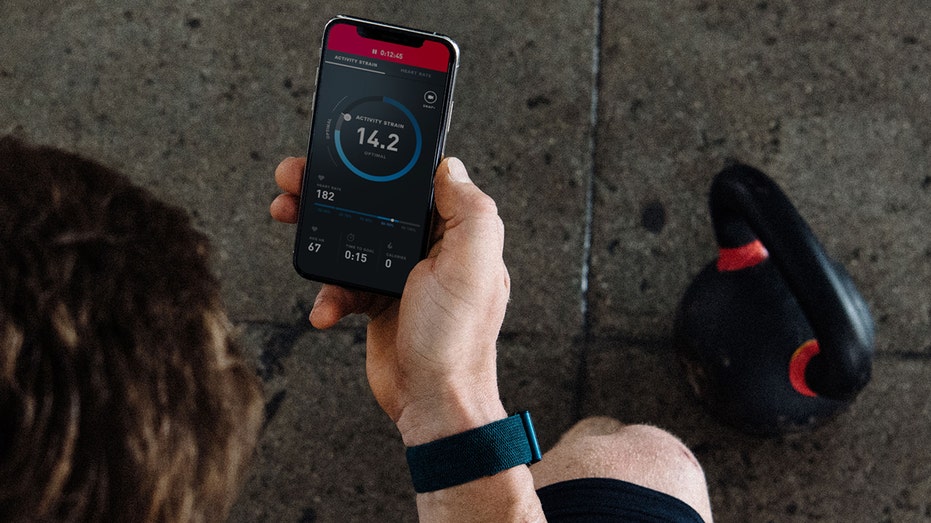How Whoop wearable device could solve NBA's load management problem
Whoop's current users include golfers Tiger Woods and Rory McIlroy
As the NBA and other pro sports leagues increasingly treat biometric data as a competitive advantage, the executives behind the wearable device Whoop are aiming to establish their subscription service as the technology of choice for high-performing athletes.
Founded in 2012 by former Harvard University squash captain Will Ahmed, Whoop tracks the biometric data and provides recommendations designed to guide wearers on their sleep schedule, exercise intensity and when to ramp up or slow down their workouts. The latest investors in Series D round led by Foundry Group joined existing backers such as former NBA Commissioner David Stern, NBA superstar Kevin Durant and the NFL Players Association.
Whoop’s connections in pro sports should prove valuable as leagues modernize their policies on wearable technology and navigate issues such as load management – a divisive practice in NBA circles in which teams selectively rest players based on a close study of their workload and biometric data. Ahmed and his investors are confident that Whoop is positioned to capitalize on the trend.
EX-NBA COMMISSIONER STERN RIPS 'HYPOCRITICAL' POLITICOS ON CHINA SPAT
“I think you’ll look back on this time period of professional athletes not measuring sleep as sort of this insane moment in the history of sports,” Ahmed told FOX Business. “It’ll just seem so fundamental in the future. People will compare to when baseball players were smoking cigarettes in the dugout – it will just seem crazy that professional athletes weren’t measuring sleep and recovery.”
Whoop has raised more than $100 million in its four investment rounds to date. Rather than charge users for the Whoop bracelet itself, the company operates on a subscription model starting at $30 per month. Subscribers receive the Whoop 3.0 wearable device for free as part of the signup process.

Whoop
While Ahmed declined to reveal how many professional athletes currently use Whoop as part of their daily regimen, he told FOX Business that users are active in every major sports league. Whoop became the NFLPA’s official recovery wearable in 2017 as part of a deal that also distributes the bracelet to every NFL player.
Aside from its applications for athletes and other active individuals, Stern, a prominent Whoop investor, said the device has legitimate business value for sports leagues. By making use of actionable data that warns them when to rest to avoid injury and maximize their training, star athletes can extend their playing careers – providing leagues with a greater talent pool to lure fans.
“That is my goal,” Stern said. “My overarching philosophy, aside from the load management, which is manifested by Whoop, is that if we could extend everyone’s career by a year, can you imagine the value of that? I think that can be done.”
As a relatively new technology, wearables are a subject of close scrutiny in professional sports, with most leagues still assessing how best to implement the devices and account for data privacy concerns. MLB allows in-game use of the devices, while the NBA’s collective-bargaining agreement approves voluntary use of wearables in practice so long as teams adhere to strict guidelines.
The practice of load management has divided NBA executives and pundits, with some, including Dallas Mavericks owner Mark Cuban, arguing that use of biometric data is in the best interest of teams and players. Others assert that the prospect of fans who paid top dollar for an NBA ticket missing out of seeing a star player due to load management is bad for business.
The NBA league office has cracked down on instances of load management that do not adhere to its guidelines. The Los Angeles Clippers were fined $50,000 this month for sitting star forward Kawhi Leonard for a nationally televised game against the Utah Jazz.
Stern said data generated by the device could provide a solution for the NBA’s dilemma. With standardized biometric monitoring, teams would have a clear benchmark for how to manage load management.
“Fans who travel long distances and then they (learn) that the player that was in for one visit that year is now being rested because of load management,” Stern said. “That’s going to be a difficult issue to keep building on for the fans, and so I think they have to be moving to an objective measurement of load.”
GET FOX BUSINESS ON THE GO BY CLICKING HERE
Whoop has become popular on the PGA Tour, where users include Tiger Woods, Justin Thomas and Rory McIlroy. Ahmed said Whoop does not typically reach out to athletes first and has no plans to offer paid endorsements to generate more interest.
“Professional athletes, along with a lot of other high performers, are the market for Whoop,” he said. “The fact that they’re wearing it and loving it without us paying them is a bigger endorsement, I think, than if they start wearing it because we pay them.”
Whoop finalized its latest investment round just days after it gained a major rival. Google entered the wearable technology sector with its acquisition of FitBit – arguably the most well-known device on the market – in a deal valued at more than $2 billion.
Apple is also pushing into consumer health with its own wearable device, the Apple Watch, and the Apple Health app. Apple is the far and away leader in the category, with 46 percent market share, according to Strategy Analytics. Fitbit's market share is just shy of 10 percent, but that may change following the Google deal.
CLICK HERE TO READ MORE ON FOX BUSINESS
Ahmed said he views the increased competition as evidence that wearable technology is gaining mainstream acceptance.
“It’s a sign that the data FitBit has collected has very valuable and we view that as a positive for the market,” he said.
